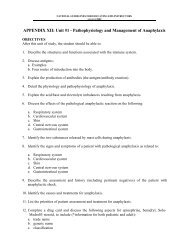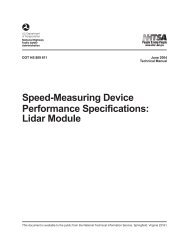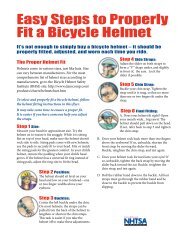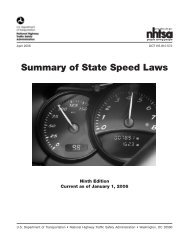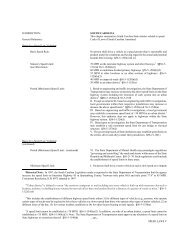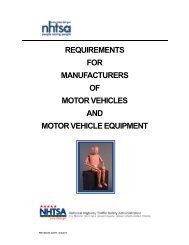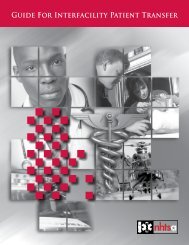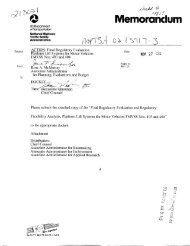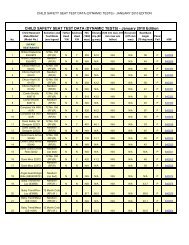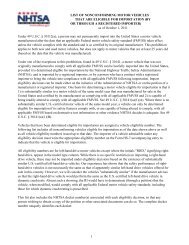Standard Practice for Emergency Medical Dispatch ... - NHTSA
Standard Practice for Emergency Medical Dispatch ... - NHTSA
Standard Practice for Emergency Medical Dispatch ... - NHTSA
You also want an ePaper? Increase the reach of your titles
YUMPU automatically turns print PDFs into web optimized ePapers that Google loves.
MEDICAL DISPATCHER TRAINING<br />
Formal EMD training contributes to the safe and effective per<strong>for</strong>mance of the medical<br />
dispatcher's role in EMS.<br />
Guidelines <strong>for</strong> the core content of EMD courses are currently being standardized by<br />
the ASTM. These guidelines will provide direction <strong>for</strong> the training (and certification)<br />
of EMD's regarding appropriate decisions about EMS responses in a safe, consistent,<br />
and nonarbitrary manner. Within the context of this broad goal, current EMD training<br />
is generally at least 24 hours in length (e.g., three 8-hour days). A typical course<br />
consists of an overview of dispatching objectives and basic dispatch techniques,<br />
concentrating on known problem areas. The role of the EMD is defined, and the<br />
concepts of medical dispatching are discussed in detail. The medical dispatch<br />
protocol in use by the sponsoring EMS agency is learned, with emphasis on<br />
interrogation skills, protocol compliance, and the provision of prearrival instructions.<br />
Common medical problems are reviewed, with an emphasis on interrogation specifics<br />
<strong>for</strong> each type of problem, and the relevance and relationship of listed prearrival<br />
instructions. Throughout the training, the importance of identifying the presence or<br />
absence of symptoms (such as "chest pain") during interrogation is emphasized,<br />
rather than making a judgmental diagnosis of "heart attack." The medical<br />
significance of the various levels of urgency <strong>for</strong> each chief complaint and its resultant<br />
response is clarified to give the student the ability to prioritize quickly the various<br />
types of incidents confronting EMD's daily. Often, courses use mock case drills to<br />
give the dispatcher a hands-on feel of protocol per<strong>for</strong>mance.<br />
A <strong>for</strong>mal examination to test student understanding and assimilation of the<br />
curriculum should me administered at the completion of an EMD course. This enables<br />
<strong>for</strong>mal certification in jurisdictions requiring or allowing it.<br />
It is recommended that EMD training:<br />
• Be required <strong>for</strong> all medical dispatchers<br />
• Be consistent in core curriculum content nationally<br />
• Be based on the medical dispatch protocol selected and approved by the<br />
sponsoring agency's physician medical director, allowing <strong>for</strong> practice use of<br />
the protocol by the EMD trainee.<br />
83



